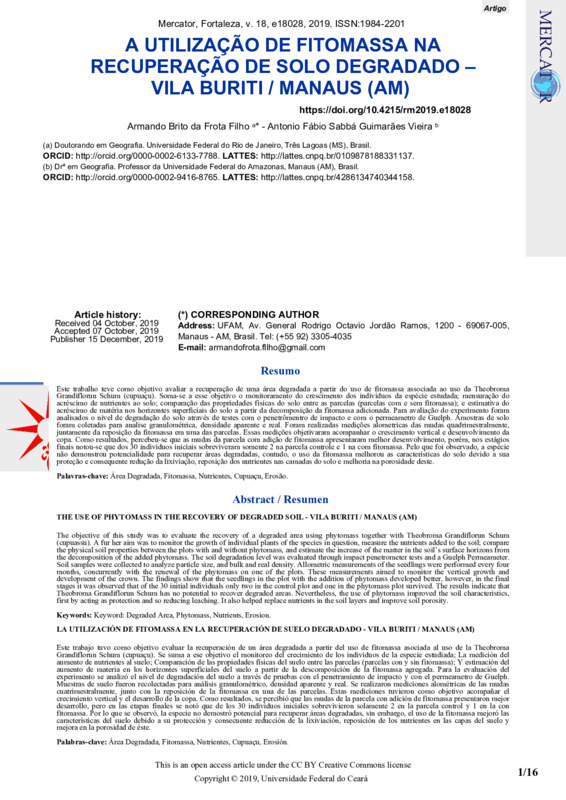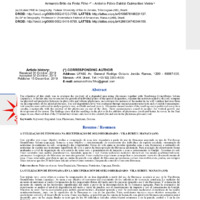A UTILIZAÇÃO DE FITOMASSA NA RECUPERAÇÃO DE SOLO DEGRADADO
Item
-
Título
-
A UTILIZAÇÃO DE FITOMASSA NA RECUPERAÇÃO DE SOLO DEGRADADO
-
Mercator
-
Universidade Federal do Rio de Janeiro
-
Universidade Federal do Amazonas
-
Autor
-
Armando Brito da Frota Filho
-
Antonio Fábio Sabbá Guimarães Vieira
-
Assunto
-
Cupuaçu
-
Erosão
-
Fitomassa
-
Nutrientes
-
Área Degradada
-
Abstract
-
The objective of this study was to evaluate the recovery of a degraded area using phytomass together with Theobroma Grandiflorun Schum (cupuassu). A further aim was to monitor the growth of individual plants of the species in question, measure the nutrients added to the soil; compare the physical soil properties between the plots with and without phytomass, and estimate the increase of the matter in the soil’s surface horizons from the decomposition of the added phytomass. The soil degradation level was evaluated through impact penetrometer tests and a Guelph Permeameter. Soil samples were collected to analyze particle size, and bulk and real density. Allometric measurements of the seedlings were
performed every four months, concurrently with the renewal of the phytomass on one of the plots. These measurements aimed to monitor the vertical growth and development of the crown. The findings show that the seedlings in the plot with the addition of phytomass developed better, however, in the final stages it was observed that of the 30 initial individuals only two in the control plot and one in the phytomass plot survived. The results indicate that Theobroma Grandiflorun Schum has no potential to recover degraded areas. Nevertheless, the use of phytomass improved the soil characteristics, first by acting as protection and so reducing leaching. It also helped replace nutrients in the soil layers and improve soil porosity.Keywords: degraded area, phytomass, nutrients, cupuassu, erosion.
-
volume
-
18
-
Date
-
2019
-
Língua
-
pt
-
doi
-
10.4215/rm2019.e18028
-
issn
-
1984-2201



